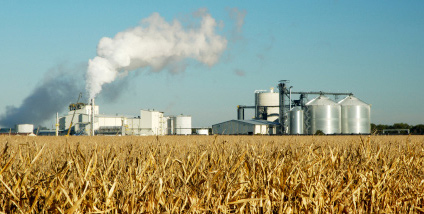
Answers on renewables
In this issue of green indicator, we shift focus from renewable fuels to non-fossil based chemicals. Over the last four months, we have been fortunate enough of getting the opinion on the burning topic of obstacles to commercialisation of non-fossil fuels, from people with different views of the industry. The individuals interviewed range from entrepreneurs, pushing this kind of projects through, to strategic advisors and individuals responsible for renewables introduction in major fuel supplying corporations.
The answers really give a good summary of the various important aspect of the issue, with Dr. Børressen of Statoil lifting the issue of feedstock availability, sustainability and just as importantly homogeneity. Dr Khan at Enerleq refreshed our understanding of the specificity of emerging markets while Mr Iyer at Golden Bridge Strategies pointed out the aspect of the informed customer. Claiming that to achieve a broad commercialisation of non-fossil fuels require a permanent shift in the perception of energy by the energy consumers. Finally Mr Stigsson of Kiram/Sunpine stressed the topic of increased taxation of greenhouse gas emitting fuels, with the revenue from such taxation used in-part to finance green fuel demonstration plants and more efficient engines.
The broad range of the answers reveal the complexity of the question and it is obvious that there is no correct answer or easy fix solution to the problem. With that said, we will in this and the coming three issues focus on the development of non-fossil feedstock based chemicals and the need/benefit of tax exemptions in the production of the same. The new question to The Answer is: Is there a need for tax-incentives on bio-chemicals as well as biofuels? Keep reading Green Indicator for more answers, from a new group of influential people in the sustainable business.
/ Christian Hulteberg
Progress for bioplastics
An area that is in the early adaption stage in the market introduction is bioplastics. There are two types of plastics to consider, biodegradable and non-biodegradable, where the first plastic is used in packaging and catering items and the other type is included in applications for mobile phone casings, carpet fibers etc. There is as such an important differentiation between the two categories in which they are suitable for different applications. The most common bioplastics are:
• Starch based
• Polylactic acid
• Poly-3-hydroxybutyrate
• Polyamide 11
• Polyethylene
The first three are biodegradable plastics with applications in foils, films, tins, cups, bottling and other packaging applications. The other two are non-biodegradable. There are however a major difference between the first four and the last one: the first listed plastics are similar in properties and chemical structure to petroleum-based plastics, while polyethylene from renewable resources is identical to the petroleum-based plastic.
This means that the commercialisation of this plastic should be helped by a couple of effects.

First of all, the barriers of entry will be lower. The production of the ethylene can be performed from renewable feedstock and be used in the same process equipment in which the fossil ethylene is converted to polyethylene. Secondly, there is no need for extensive marketing to educate the market on the properties of the new material since it is completely compatible with what is traditionally used in the market place.
The fact that this is a viable strategy is exemplified with the first non-fossil based polyethylene production plant in the world. The 200 000 tpa Braskem plant in Brazil has just finished all the permitting and is coming online in August, two months ahead of schedule. The plant produces ethylene from about 500 million liters of ethanol and polymerises this in an existing industrial unit in the Trifuno Complex in Rio Grande do Sul. The company states that there is a significant demand for their product and is quoted saying that the demand is in the 600 000 tpa range or three times the first plants capacity.
|



